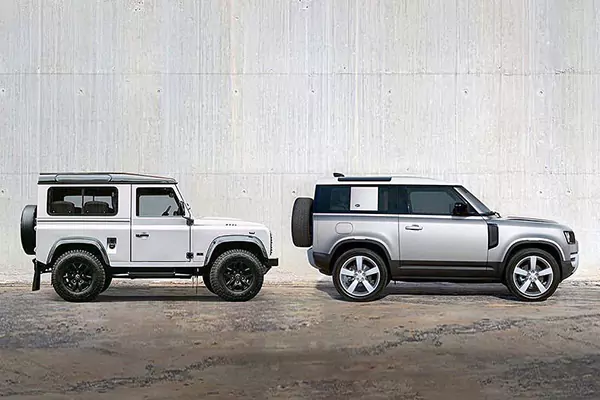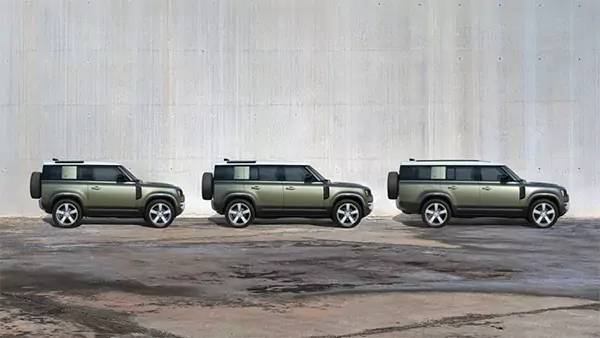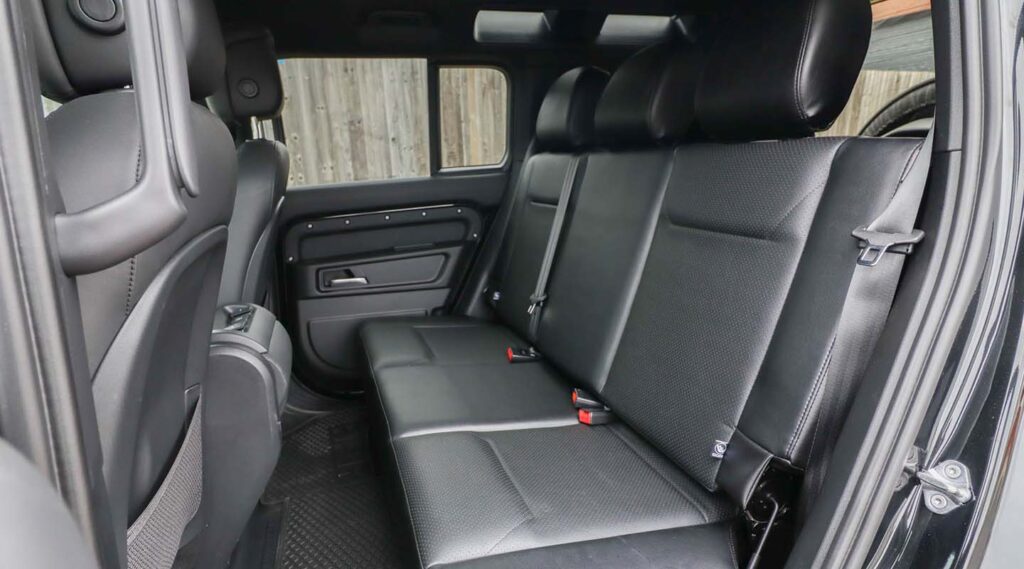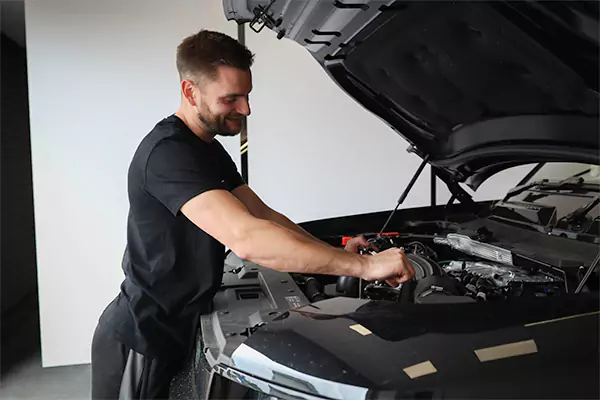The Land Rover designers and engineers had a tall order when trying to re-invent a ‘new defender’, a vehicle regarded as one of the most versatile automotive achievements to ever be produced. The classic Land Rover Defender was seen as a rugged and practical tool, capable of conquering all terrain.
The 2020 Defender had to pay homage to this special vehicle but also keep up with the modern developments and technology in the industry. When you put the two vehicles side by side, some styling quirks and cues were blatantly carried across from the classic vehicle. But this new package is configured for a more user-friendly, luxurious and exhilarating drive.

What Do We Think?
Here at Midlands LR Centre we love the new Defender, it would be the choice of car for many of us, which is ideal given where we work! The styling perfectly denotes the old Defender, with the boxy lines, intentionally exposed bolts and maintained spare wheel on the rear door being stand out styling features. The use of modern, plush materials makes a basic interior feel polished and a nice place to be, paired with the screen and technology to create a comfortable, relaxing environment.
What we like best is the host of styling and accessories available on the market. Creating a practical yet aesthetic vehicle has never been easier. Urban Automotive lead the market with some amazing designs but plenty of other supplier flood the market with more budget friendly options.
Although we think the 90 proportionally looks the best 4×4 in the lineup, the Defender 110 would be our choice to retain the practicality of a large SUV. You don’t need to ask twice about engine selection – we’ll take the V8 every day of the week. Running costs may be higher but the smiles the sound provides are priceless..
Does it Cope with Off Road Terrain?
As previously mentioned the whole purpose of the classic Defender was to conquer all terrain, so does this new kid on the block keep up when put to the test? There is a great article here which compares the two side by side. Although the driving experience is totally different, it suggests the new Defender retains its off-road capability, just in a more automated, assisted manner.
New or Old Defender?
There are a number of factors that will impact your choice of Defender. The first decision is the older or newer generation. Most would opt for the newer Defender for the modern driving experience, comfort and reliability that the modern technology provides. However, if you are looking for a farm vehicle to lug around bags of corn and hay bales the old version is triumphant on practicality in this comparison. Let’s also face it, there is truly something magical about the heritage and image that comes with driving an old defender.
Defender 90, 110 or 130?
Once you’ve made your choice of age, the three wheelbases provide different advantages. Firstly the smaller Defender 90, a compact 4×4 but to many the better looking option, carrying the box styling and proportions well. If you want the vehicle to ferry around passengers the new 90 happens to have the option of six seats. Space is limited for the rear passengers and even more limited in terms of boot capacity. If it’s more than 2 passengers we’d suggest looking at a longer model.
The Defender 110 features 5 doors and a longer wheelbase meaning a massive load space of 857 litres. Suited to carrying huge cargo and thanks to air suspension, you can also lower the car using a button inside the boot to make loading and unloading cumbersome items much easier.
The Defender 130 is quite a monster, being closely related to the 110 but with an extra 340mm of body added in, resulting in seating for eight people inside. It carries the same wheelbase as the 110 however comes in at just under 2m tall, just over 5m long and 2.1m wide. Despite the extra weight and size, it drives remarkably similar to the smaller 110 version. So if you’re looking for a Defender with copious amounts of space for passengers the Defender 130 is for you, however, it isn’t available in the plug-in hybrid or V8 engine configurations.

Engine Choice
This leads to the one factor we haven’t discussed, engine choice. Diesel versions of the Land Rover Defender all use the same 3.0-litre six-cylinder engine, which has mild-hybrid assistance to smooth out power delivery and increase efficiency.
The entry-level 246bhp D250 has plenty of low-down grunt and is all the engine you’d ever need. Sitting above this is the more powerfully tuned 296bhp D300. Being the same engine just with a different tune, it can be better value to pick up a D250 and have the power upgrades, this is a service we offer at Midlands LR Centre. The D300 does the 0-62mph sprint in around 7.0 seconds, which is plenty for modern day driving.
Petrol power starts with the P400. It’s a 3.0-litre six-cylinder engine capable of a decent turn of speed, but requires more revving than the diesels in everyday driving. The fastest Defender is the exorbitantly priced P525 V8 petrol. Its 0-60mph time of 5.1sec and makes a raucous sound as it does so.
Lastly, there’s a plug-in hybrid (PHEV). It’s called the P400e and uses a 2.0-litre petrol coupled with an electric motor. Together they produce 398bhp, which is good enough for 0-60mph in 5.4sec and an official electric-only range of 27 miles. It’s pretty expensive and is only available with the 110 body.
Conclusion
The 2020 Defender provides a modern driving experience whilst respecting and replicating the things that made the Land Rover the icon that it is. The Land Rover Defender is not a luxury SUV but it’s a solid option and a blank canvas to make a unique vehicle should you wish. All available models and engines provide something different making them a great choice for a range of purposes. It was a risky move trying to re-invent something like the original Defender. Despite some purists being against the re-design we at Midlands LR think they have done a sterling job.

